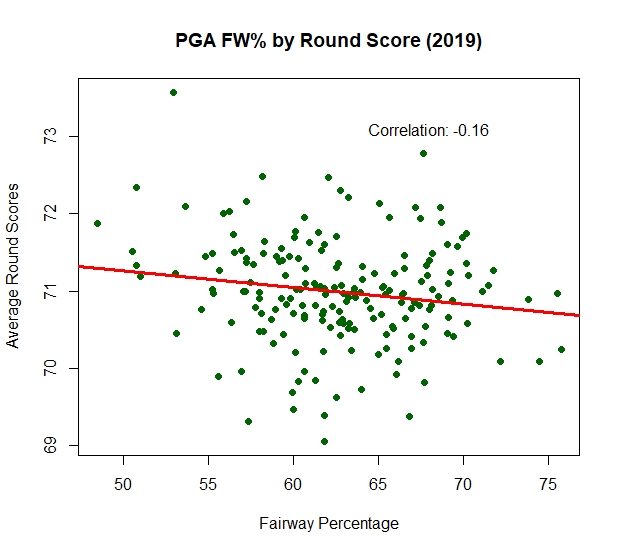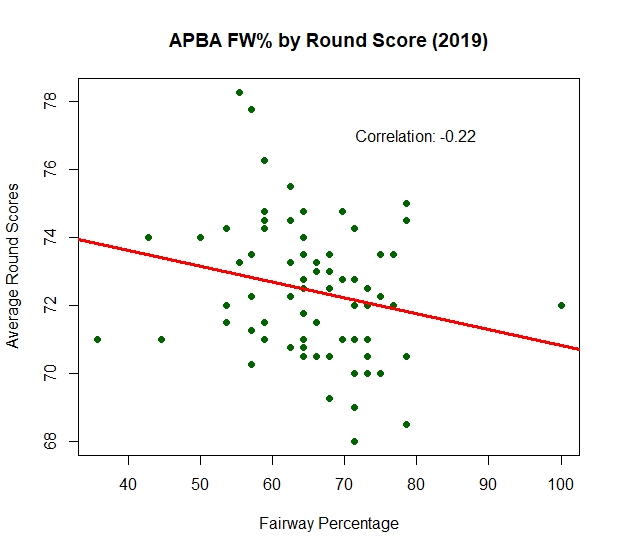In a recent post, I looked at the relationship between Fairways Hit and Round Scores, using my Game Caddie Record Book (GCRB) dataset. I found a statistically significant -0.19 correlation, suggesting that hitting fairways off the tee is associated to some extent with better scores when playing by Master Game rules. However, the amount of scatter (i.e., variability) in my data suggests that its effect probably isn’t that strong when compared to other possible factors.
That got me to wondering what the distribution of Fairways Hit looks like at the PGA level and whether an inverse relationship between Fairways Hit and Scoring exists there, too. The PGA dataset used for this analysis consists of 186 golfers and is based on the 2019 season. It uses each golfer’s FW% and average score for the season.
The correlation is fairly weak (-0.16) but statistically significant. The scatterplot and trend line are shown below.

Once again, we see quite a lot of scatter, suggesting that there’s more to scoring lower at the PGA level than simply hitting fairways off the tee. (OK, I realize that statement is painfully obvious, but it’s interesting to look at the data anyway.)
So, how does that compare to APBA Golf? The data I used in my previous post represented all the APBA rounds I’ve played since I began tracking stats. That dataset contains players from several recent seasons and the All-Time Great card sets. The analysis also used numbers of Fairways Hit, not FW%. As mentioned, the correlation between Fairways Hit and Average Round Score was -0.19.
For the present analysis, I used FW% and Average Round Scores for 72 golfers from the APBA 2019 season 80-card set. (I haven’t gotten around to playing the other eight.) The total number of rounds played is 264–vastly fewer than the PGA dataset, I’m sure.
Once more, the correlation is statistically significant (-0.22) but fairly weak. The scatter plot and trend line are shown below.

Both the PGA and APBA datasets show considerable variability in terms of how FW% aligns with Average Round Scores. The dispersion is greater in the APBA data, but that could easily be explained by the far fewer observations in that dataset.
Yet, the overall trend between the PGA results and APBA results appears to be quite similar. The APBA Golf Master Game seems to reflect real-life professional golf accurately with respect to the effect of hitting fairways off the tee on average scores.